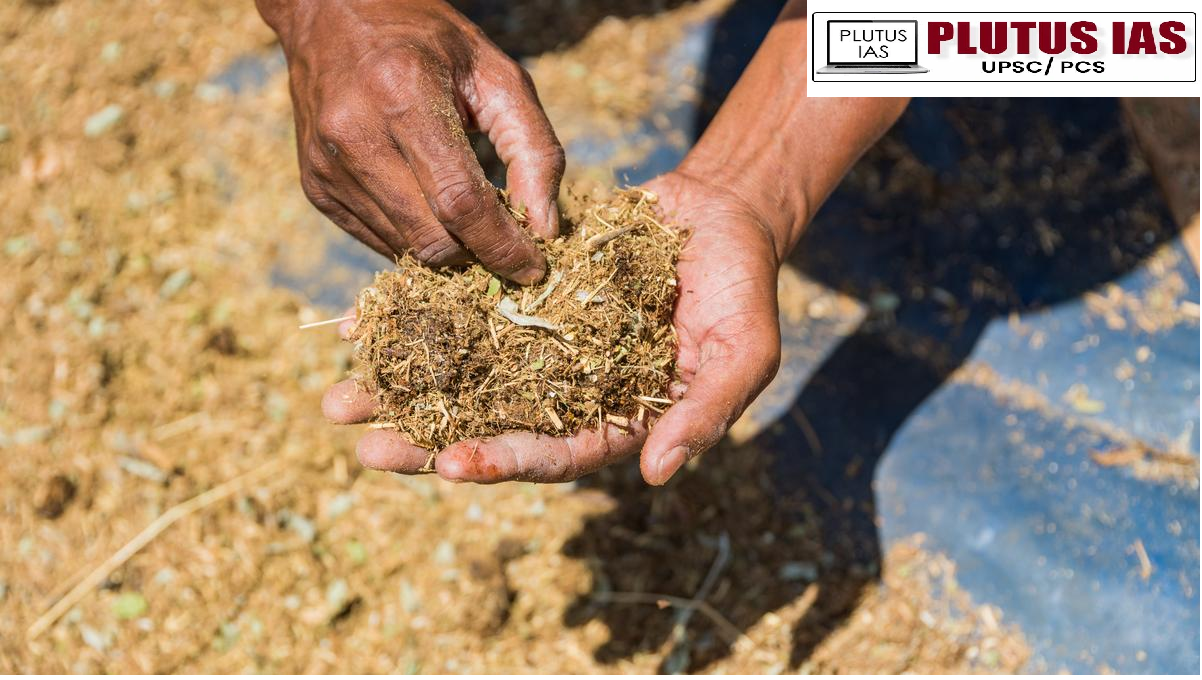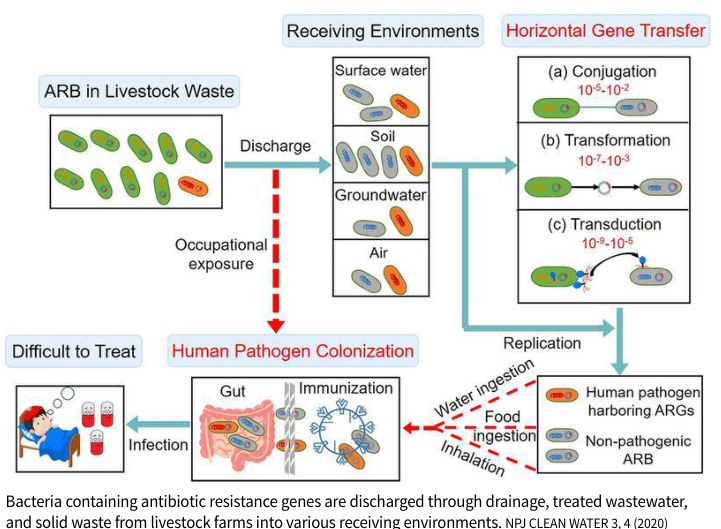24 Jun Insect-Based Feed: A Sustainable Weapon Against Antimicrobial Resistance
This article covers “Daily Current Affairs” and the Topic of Insect-Based Feed: A Sustainable Weapon Against Antimicrobial Resistance
SYLLABUS MAPPING:
GS-3- Science and technology -Insect-Based Feed: A Sustainable Weapon Against Antimicrobial Resistance
FOR PRELIMS
What is Antimicrobial Resistance (AMR)? How does it affect human and animal health?
FOR MAINS
What are the major causes of antimicrobial resistance (AMR) in India?
Why in the News?
In 2024–2025, ICAR institutes like CIBA and CMFRI signed MoUs with Ultra Nutri India, Loopworm, and Entofood.
These partnerships promote insect-based feed, especially using black soldier fly (Hermetia illucens). The initiative aims to offer a sustainable alternative protein source for livestock and aquaculture. It supports efforts to combat antimicrobial resistance (AMR) by reducing antibiotic dependence. This also helps lower the environmental footprint of conventional animal feed practices.

What is Antimicrobial Resistance (AMR)?
Antimicrobial Resistance (AMR) refers to the ability of microorganisms such as bacteria, viruses, fungi, and parasites to resist the effects of medications that once killed them. It makes infections harder to treat and increases the risk of disease spread, severe illness, and death. AMR emerges due to the overuse or misuse of antibiotics in humans, animals, and agriculture. It is a growing global health threat that undermines the effectiveness of modern medicine.

Background
1. AMR as a Global Threat: Antimicrobial resistance (AMR) is emerging as a critical public health challenge, with livestock production being a major contributor to rising antimicrobial consumption.
2. High Antibiotic Use in Animal Husbandry: Globally, over 99,500 tons of antibiotics are used annually in animal farming, projected to reach 200,000 tons by 2030, a 53% rise.
3. Feed Practices and Overuse of Antibiotics: Traditional feed sources (like fish meal and soybean) are associated with low feed efficiency, prompting overuse of antibiotics to boost growth and immunity in animals.
4. Environmental Burden of Conventional Feed: Soy and fish-based feeds contribute significantly to deforestation, greenhouse gas emissions, and water stress, making them ecologically unsustainable.
5. AMR Transmission Pathways: Antibiotic residues and resistance genes from livestock enter human and ecological systems via direct contact, contaminated water, or agricultural runoff.
6. Science-Policy Recognition (2014 Summit): A global summit in 2014 acknowledged that efforts to improve feed-conversion ratios in livestock indirectly drove antibiotic overuse, increasing AMR risk.
7. Search for Sustainable Alternatives: Rising concern over AMR and ecological degradation has led researchers and governments to explore alternatives like insect-based protein as low-impact, high-efficiency feed options.
Environmental and Health Dimensions
1. Deforestation & Land Degradation: Cultivation of soy and maize for animal feed drives large-scale deforestation and depletes soil health.
2. Greenhouse Gas Emissions: Traditional feed production contributes significantly to methane and nitrous oxide emissions, potent greenhouse gases.
3. Water Pollution: Runoff from feed crops and livestock waste leads to eutrophication of water bodies, harming aquatic ecosystems.
4. Antimicrobial Resistance (AMR): Use of antibiotics in animal feed promotes the development of resistant bacteria, which can transfer to humans.
5. Health Hazards: Pathogens and resistant genes from livestock waste can contaminate water and food chains, posing risks of incurable infections.
6. Circular Economy Solution: Using insects to convert organic waste into protein-rich feed reduces environmental burden and minimises AMR risk.
Scientific and Economic Dimensions
1. High Nutritional Value: Insects like black soldier flies, crickets, and mealworms are rich in protein and micronutrients such as iron, zinc, and calcium.
2. Easy Digestibility: Insect protein is more easily digested by livestock and fish compared to plant-based or traditional feeds.
3. Efficient Protein Yield: Insects convert feed into body mass more efficiently, offering higher protein output per unit of input.
4. Better Protein-to-Cost Ratio: Black soldier fly meal (0.85 kg yield per kg fish meal) is economically competitive with fish and soy meal.
5. Low Resource Footprint: Insect farming requires significantly less land, water, and energy compared to conventional feed sources.
6. Rapid Growth Cycle: Insects can be bred and harvested in a few weeks, enabling quick production scaling.
7. Utilisation of Organic Waste: Insects can feed on agri-food waste, creating value from low-cost inputs and contributing to circular economy goals.
Challenges
1. Regulatory Ambiguity: Many developing countries lack clear guidelines or legal frameworks for using insects in animal feed, creating uncertainty for investors and producers.
2. Consumer Perception: Psychological resistance and cultural bias against insects can limit acceptance, especially in markets where insect consumption is not traditional.
3. Market Acceptance: Livestock and aquaculture sectors are often hesitant to shift from conventional feeds without proven commercial results.
4. Lack of Standardization: Absence of uniform safety and quality standards (e.g., microbial load, allergen content) raises concerns about feed consistency and animal health.
5. High Initial Investment: Setting up insect farming facilities requires capital-intensive infrastructure (controlled environment systems, biosecure zones, etc.).
6. Technical Knowledge Gaps: Limited research and trained personnel in entomoculture and insect nutrition hinder efficient scale-up and productivity.
7. Logistics and Supply Chains: Challenges in storing, processing, and transporting insects at commercial scale impact reliability and pricing.
8. Regulatory Alignment with Global Trade: Lack of harmonization with international standards (e.g., Codex, EU norms) can restrict exports and foreign investments.
Conclusion
The rise of antimicrobial resistance (AMR) poses a severe threat to global health, food security, and environmental sustainability. The overuse of antibiotics in animal husbandry, driven by inefficiencies in conventional feed, has contributed significantly to this crisis. The recent partnerships by ICAR institutes with insect-based feed startups like Loopworm and Entofood represent a transformative shift toward sustainable livestock practices. Insect protein—especially from the black soldier fly—offers a circular economy solution that addresses nutritional, ecological, and AMR challenges simultaneously.
Prelims Questions
Q. Consider the following statements:
1. Insect-based feeds such as those derived from black soldier flies offer a sustainable alternative to fishmeal and soybean in livestock and aquaculture.
2. Use of insect-based protein in animal feed helps reduce antibiotic dependence, thereby addressing the challenge of Antimicrobial Resistance (AMR).
3. Insect farming for feed production significantly reduces the environmental footprint by utilising organic waste and requiring minimal land and water resources.
Which of the above statements is/are correct?
(a) 1 and 2 only
(b) 2 and 3 only
(c) 1 and 3 only
(d) 1, 2, and 3
Answer: D
Mains Questions
Q. In the context of rising antimicrobial resistance (AMR), discuss the role of sustainable feed alternatives such as insect-based protein in livestock and aquaculture. How can such innovations promote a circular economy in India?
(250 words, 15 marks)




No Comments